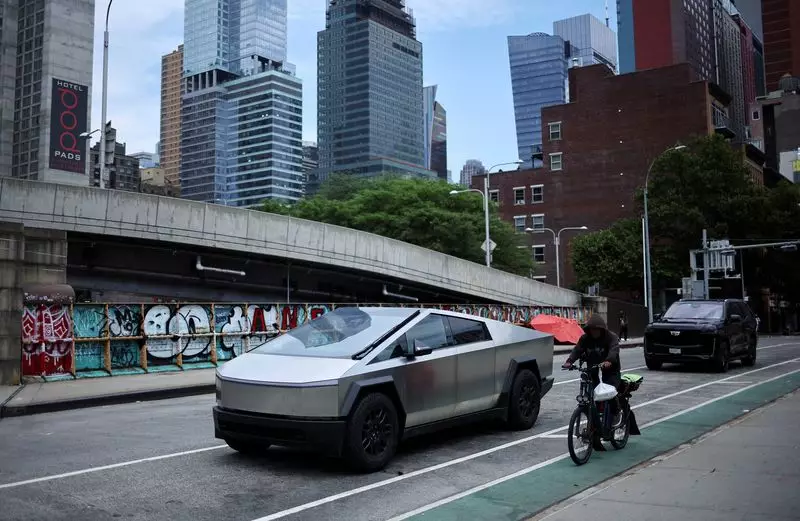Tesla, renowned for its innovation and disruption in the automotive industry, recently faced scrutiny regarding its flagship product, the Cybertruck. Despite aggressive price adjustments in the last quarter, the electric vehicle manufacturer managed only to deliver approximately 15,000 units of the Cybertruck during this period, far below expectations. Analysts estimate annual deliveries to hover between 35,000 to 40,000, a stark contrast to Tesla’s earlier proclamations of achieving 2 million pre-orders. This stark disparity raises critical questions: Is the Cybertruck not resonating with consumers as anticipated?
Bernstein analysts are increasingly vocal about their skepticism regarding the Cybertruck’s future viability. They highlight the lack of profitability for the vehicle, indicating that it may not generate positive margins at all. This troubling insight propels the Cybertruck into a category of potential strategic missteps for Tesla, particularly when one considers the significant resources and time—four years of development—devoted to a project that now seems to divert focus from Tesla’s pressing need for more affordable models. As the market becomes inundated with competitors offering lower-priced electric vehicles, Tesla’s premium pricing strategy may become a liability.
A key concern raised by analysts relates to the declining auto gross margins for Tesla. Their projections suggest a decrease below 15% in profitability, putting the company at a disadvantage compared to traditional automakers that have more established profit structures. The aggressive pricing strategies Tesla has employed to maintain market share—such as discounted rates and financing incentives—have also fueled concerns about the sustainability of its profit model. In a marketplace filled with competitive offerings, maintaining healthy margins will be paramount if Tesla aims to sustain its leadership position.
In addition to the challenges facing the Cybertruck, Tesla’s innovative aspirations in the robotaxi sector appear to be met with skepticism. Despite efforts to pivot investor attention toward autonomous driving solutions, Bernstein’s analysts suggest that Tesla may not be as far ahead as it believes. Limited sensor capabilities and potential regulatory barriers present significant challenges, especially compared to competitors like Waymo, which boast advanced accident simulation technologies. Moreover, even if Tesla achieves a breakthrough in Level 5 autonomy, analysts caution that the escalation of AI technologies may enable other companies to quickly adapt, thereby reducing Tesla’s competitive advantages and profit margins.
Tesla’s recent quarterly report shows a slight uptick in overall vehicle deliveries, with a 2% increase year-over-year totaling 495,600 vehicles. However, this growth fell short of many analysts’ predictions, resulting in a slight year-over-year decline in total annual deliveries. On a more positive note, energy storage shipments surged by an impressive 244% to reach 11 GWh in the same period, offering a glimmering opportunity for Tesla’s diversification away from automotive challenges.
The landscape for Tesla is complex. With the Cybertruck’s underwhelming performance, shrinking profit margins, and uncertainty in its robotaxi endeavors, questions arise about the company’s strategic direction. As competition intensifies, Tesla must recalibrate its approach to remain a leading force in the evolving automotive market.

